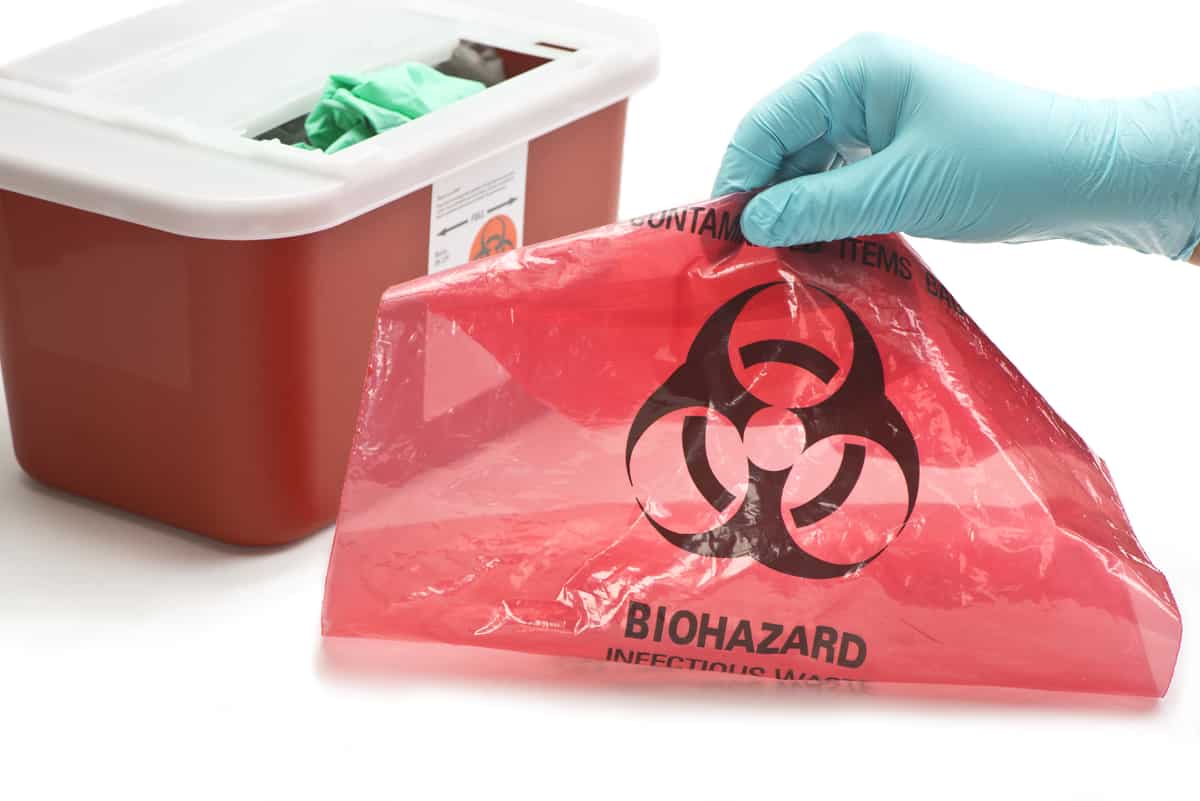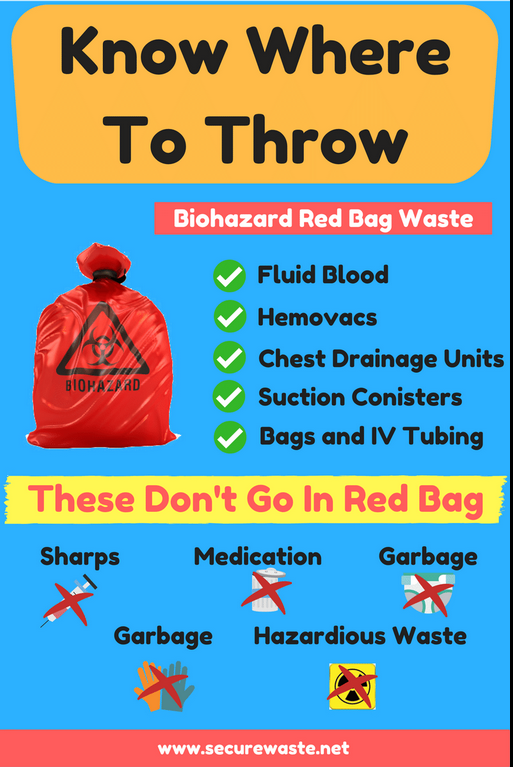Defending Well-Being: Unveiling the Significance of Specialist Medical Waste Removal
Defending Well-Being: Unveiling the Significance of Specialist Medical Waste Removal
Blog Article
Minimize Prices and Make The Most Of Safety And Security: Effective Medical Waste Disposal Techniques
Effective clinical garbage disposal approaches are vital for healthcare centers to lessen expenses and take full advantage of safety and security. With the expanding worry for environmental sustainability and the boosting number of policies surrounding waste monitoring, it is essential for healthcare companies to embrace certified and efficient practices. By applying appropriate segregation and classification, effective product packaging and labeling, risk-free transportation and handling, reliable treatment and disposal approaches, and compliance with regulatory standards, health care centers can make certain the risk-free and responsible monitoring of medical waste. In this discussion, we will certainly check out each of these strategies thoroughly, offering understandings and useful pointers for health care professionals to enhance their waste disposal procedures.

Proper Segregation and Categorization
Appropriate partition and classification are important elements of reliable medical waste disposal techniques, making certain the safety and security of healthcare workers, the public, and the environment - medical waste removal near me. medical waste disposal services with WasteX. By separating various sorts of clinical waste at the point of generation, medical care centers can lessen the threat of cross-contamination and prospective damage to individuals and communities
Among the essential elements in appropriate partition is the recognition and classification of clinical waste. This involves categorizing waste into different teams, such as transmittable, dangerous, contaminated, or pharmaceutical waste. Each classification requires particular handling, storage, and disposal approaches to avoid any damaging effects on human wellness and the atmosphere.
In addition, appropriate segregation additionally includes making use of color-coded tags and containers to clearly determine and set apart the numerous kinds of clinical waste. This assists medical care workers and waste administration employees to quickly identify and handle the waste properly. For example, red containers may be made use of for infectious waste, while yellow containers may be marked for contaminated materials.
In addition to partition, correct categorization likewise entails the proper packaging and control of clinical waste. This ensures that waste is securely kept and transported without positioning any type of threats to individuals or the setting. Making use of puncture-resistant and leak-proof containers, as well as appropriately securing and classifying them, aids to stop any kind of unintended exposure or release of unsafe substances.
Effective Product Packaging and Classifying
Effective product packaging and labeling play a crucial function in guaranteeing the risk-free and efficient disposal of medical waste. Appropriate product packaging is necessary to protect against leak, damage, or splilling throughout transportation and handling. It assists to reduce the risk of contamination and safeguards healthcare workers, waste monitoring employees, and the setting from prospective dangers.
Medical waste ought to be packaged in durable and leak-proof containers that are resistant to penetrate and damage. These containers must be appropriately sealed to avoid any kind of leak. Furthermore, the packaging needs to have the ability to endure the conditions of transport, including temperature variations and misuse.
Identifying is equally vital as it supplies important information concerning the materials of the waste and any prospective dangers connected with it. The tags need to include the name of the healthcare center, the kind of waste, and any kind of special delivery instructions. Standardized and clear labeling makes certain that waste administration personnel can quickly identify and take care of the waste properly.
Reliable packaging and labeling additionally aid in the correct segregation and classification of medical waste. Clear labeling enables easy identification of various waste streams, such as transmittable waste, sharps, or pharmaceutical waste. This helps in simplifying the disposal process and making sure that the waste is treated or dealt with according to regulative standards.
Safe Transport and Handling
Guaranteeing the secure transportation and handling of medical waste is of utmost relevance in order to avoid any kind of potential health and wellness and ecological risks. Medical waste, such as sharps, polluted products, and pharmaceutical waste, must be correctly packaged and managed to decrease the danger of direct exposure to unsafe substances and microorganisms.
Moving clinical waste requires compliance with stringent guidelines and guidelines set by environmental firms and neighborhood authorities. These guidelines aim to shield the health and wellness and security of employees associated with waste monitoring and prevent the release of hazardous products into the setting.
To guarantee safe transport, clinical waste ought to be placed in puncture-resistant and leak-proof containers that are properly secured and identified. Additionally, it is essential to make use of specific cars equipped with ideal safety attributes to deliver medical waste. medical waste disposal services with WasteX.
Dealing with clinical waste additionally requires appropriate training and adherence to safety methods. Workers associated with the handling of medical waste must put on appropriate personal safety tools (PPE) such as gloves, gowns, and masks to decrease the risk of exposure. They check out this site must additionally adhere to strict hygiene practices to stop the spread of infections and make certain the secure disposal of waste.
Effective Treatment and Disposal Techniques
Carrying out ideal therapy and disposal approaches is crucial in managing medical waste effectively and reducing possible wellness and ecological threats. Clinical waste, that includes sharps, transmittable products, chemicals, and drugs, can present considerable dangers otherwise handled and gotten rid of appropriately. There are a number of treatment and disposal methods available that comply with governing standards and advertise risk-free techniques.
One medical waste disposal services with WasteX common technique is incineration, which entails melting the waste at heats. Incineration is reliable in damaging microorganisms and decreasing the volume of waste, yet it can launch dangerous toxins into the air if not properly controlled. It is crucial to use contemporary incinerators geared up with discharge control innovations.
Another method is autoclaving, which makes use of steam and pressure to sterilize the waste. Autoclaving works in eliminating virus and minimizing the volume of waste, but it requires mindful surveillance and upkeep to make sure appropriate functioning. The sterilized waste can after that be securely thrown away in a garbage dump.
Chemical treatment is an additional alternative, which involves utilizing disinfectants or various other chemicals to reduce the effects of microorganisms. This approach is frequently utilized for liquid waste, such as research laboratory samplings. It is crucial to use ideal chemicals and comply with correct procedures to ensure efficient treatment and stop environmental contamination.

Conformity With Regulatory Guidelines
Abiding by regulatory standards is essential in making sure proper conformity with medical garbage disposal practices. These standards are implemented to secure public health, stop ecological contamination, and maintain work environment safety and security. Compliance with governing guidelines is important for medical care facilities, as non-compliance can lead to fines, penalties, and reputational damage.
Regulative standards lay out the correct handling, storage, transportation, and disposal of medical waste. They give specific directions on product packaging needs, labeling, and record-keeping. These standards also deal with the partition of various waste streams, such as sharps, infectious waste, and pharmaceutical waste. Health care centers need to ensure that their waste management practices line up with these guidelines to lessen the threat of direct exposure to harmful products and protect against the spread of infections.
To maintain compliance, healthcare centers need to develop thorough waste monitoring programs that consist of team training, routine audits, and recurring surveillance. It is important to maintain current with any kind of modifications or updates to regulative guidelines, as practices might advance gradually. By staying informed and applying correct procedures, health care facilities can lower the possibility for regulative violations and protect the wellness and safety of their staff, people, and the bordering community.
Verdict
Finally, carrying out effective clinical waste disposal strategies is crucial for making best use of and decreasing costs security. Proper segregation and classification, effective product packaging and labeling, safe transport and handling, and reliable therapy and disposal techniques are essential actions to guarantee conformity with regulative guidelines. medical waste removal service. By sticking to these strategies, medical care facilities can shield the environment and public wellness while also minimizing financial problems linked with medical waste management
By applying proper segregation and classification, efficient packaging and labeling, risk-free transport and handling, effective treatment and disposal approaches, and conformity with regulatory standards, health care centers can guarantee the responsible and risk-free administration of clinical waste. Red containers might be used for contagious waste, while yellow containers might be marked for hazardous waste.
Clear and standardized labeling makes certain that try this out waste management personnel can easily determine and manage the waste suitably. (medical waste disposal services with WasteX)
Clear labeling enables for very easy recognition of various waste streams, such as contagious waste, sharps, or pharmaceutical waste. These guidelines also resolve the partition of different waste streams, such as sharps, infectious waste, and pharmaceutical waste.
Report this page